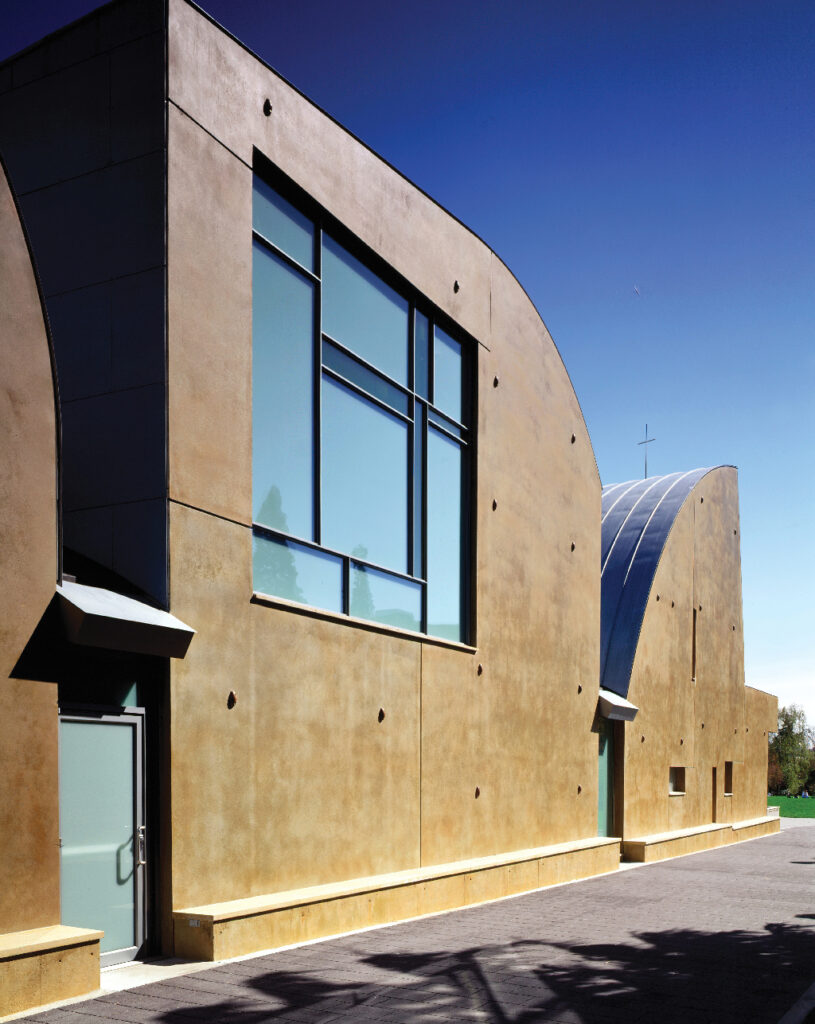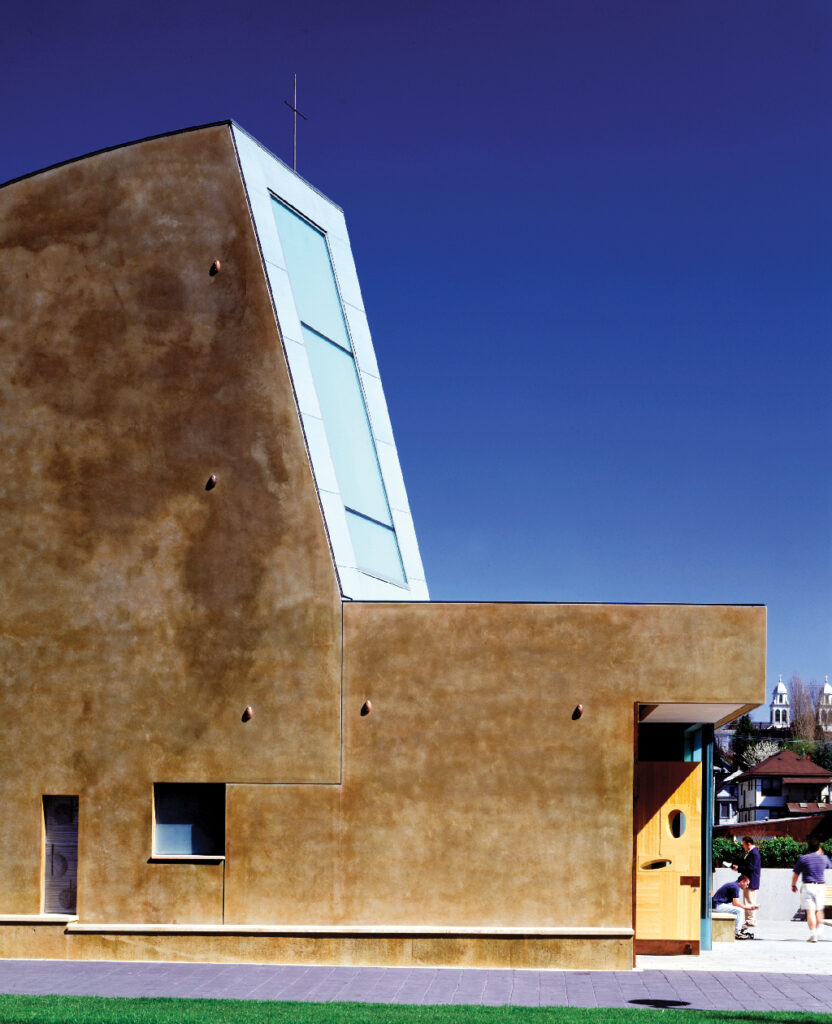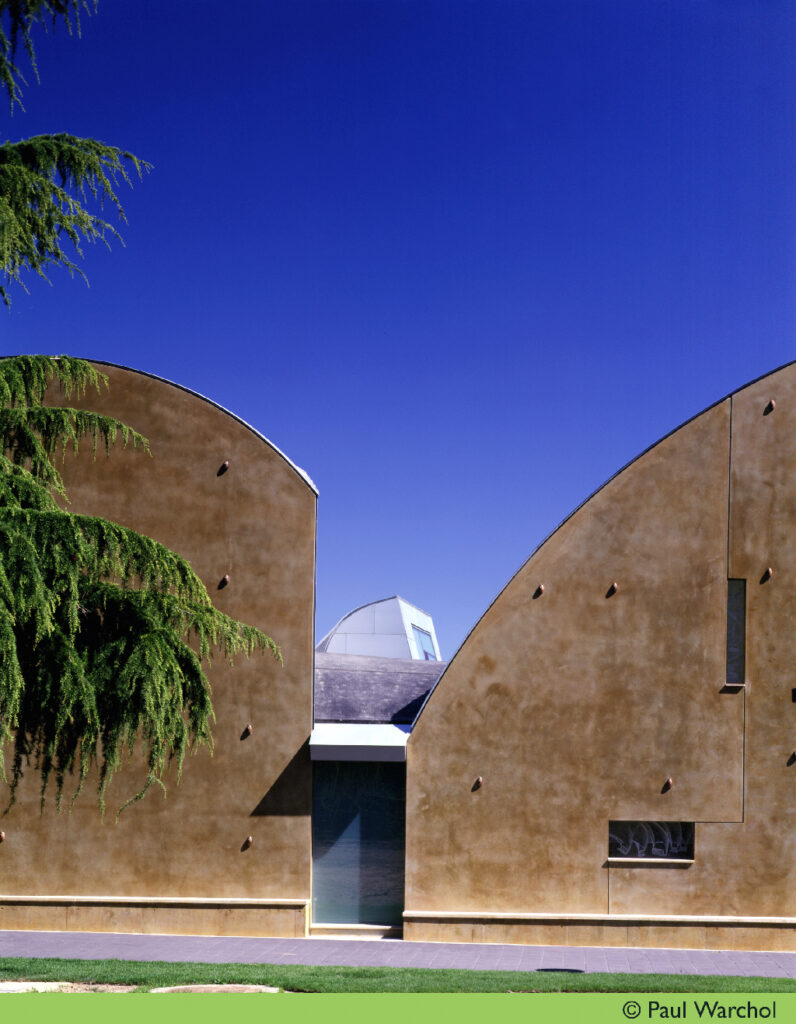Chapel of St. Ignatius in Seattle Wins AIA’S 2022 Twenty-Five Year Award
Español | Translation Sponsored by TCA

By Mitch Bloomquist
Images by Paul Warchol
The American Institute of Architects (AIA) is honoring the Chapel of St. Ignatius in Seattle, designed by Steven Holl Architects, with its Twenty-five Year Award. AIA announced the honor during an awards ceremony at the A’22 conference in Chicago, lauding the project as a “building that has set a precedent for the last 25–35 years and continues to set standards of excellence for its architectural design and significance,” according to an AIA press release.
The Chapel of St. Ignatius serves as one of the greatest examples of the architectural potential of tilt-up construction. The project is highly regarded by architectural critics, students, and professionals, and is widely publicized. In an article entitled “To the Lighthouse” for Time, Richard Lacayo wrote, “One of the most widely studied churches of the past few years has been Steven Holl’s Chapel of St. Ignatius.” Noted authors Kenneth Frampton, Robert McCarter, and Holl himself have specifically called out the construction method as a major contributor to the success of the project.

Holl’s introduction and approach to the application of tilt-up technology lend great insight to the success of the project. His understanding of the method’s potential led him to utilize tilt-up on several other projects including the Planar House in Arizona and the Avi Telyas residence on Long Island. “I am inspired by the potential that architecture can tell you how it is made and that structure can be a core part of the meaning of a project,” said Holl. “The Chapel concept ‘seven bottles of light in a stone box’ became possible when we envisioned the tilt-up as ‘giant stone fragments,’ which could interlock in a sculptural way. I see many opportunities to explore these ideas further.”
The Stone Box
Holl’s concept for The Chapel of St. Ignatius, “seven bottles of light in a stone box,” is expressed through the tilt-up method of construction, though it did not start out that way. Initially, Holl envisioned the use of stone, a material traditionally employed for religious construction, as the primary material for the structure’s exterior. “However, in a demonstration of [Frank Lloyd] Wright’s aphorism ‘limits have always been the best friends of the architect,’ budgetary limitations resulted in the decision to construct the outer walls as tilt-up concrete,” writes McCarter in his monograph of Holl’s work.
Thomas Taylor, PE, Managing Principal for Datum Engineers Inc., worked closely with the design team on the transition from masonry to tilt-up, and said Holl was open to the idea from the beginning. “I was inspired by tilt-up construction years before when I visited the Kings Road House by Rudolf Schindler,” said Holl.
Holl and Frampton point to both the practical project savings provided by the method and the benefits afforded by the material, agreeing that the integral-color, site-cast concrete panels “define a tectonic more direct and far more economical than stone veneer.”1
The poetry of Steven Holl’s application of the tilt-up method resides in the interaction between desired effect and its inherent manifestation in the construction method. “When seen from the outside,” McCarter writes, “the integrally colored tilt-up concrete walls together form flat vertical surfaces precisely revealing the shape of the interior section, and emphasizing through their monolithic materiality the way in which the inner space presses out against the rectangular limits of the volume.”
Openings occur strategically within the joint between two panels and at the edges of panels, interacting with the roof, building corner, and ground. The opportunistic placement of the openings accentuates the joints and dissolves the appearance of a panelized façade. “The complexly interlocking tilt-up concrete walls, each a different size and shape, are like the pieces of a puzzle in the way they reveal the process of assembly, and in their combination of massive panels and intimate apertures they have an ambiguous sense of scale,” writes McCarter. “Quite different from that which would have been imparted by the repetitive pieces of stone cladding that were initially considered.”
At the corners of the building, the concrete panels interlock to reveal the load-bearing thickness of the panels.


A Master Class Everyone Attends but Few Comprehend
The Chapel of St. Ignatius is like a master class in tilt-up that everyone took, but few have put the lessons learned into action. Holl’s masterful demonstration of the potential for tilt-up to produce canonical architecture is, for many architects, their first (and often only) exposure to the tilt-up construction method. The application of the technology was extraordinarily creative as the method had, at the time, a reputation for use primarily on industrial structures.
Low cost, low technology movements in architecture are nothing new. The ideas of reusing shipping containers as building blocks, or inflatable balloons covered in concrete as shelter, continue to be studied by architectural students and professionals, and are continuously discussed in great depth by serious architectural publications. Many of these ideas lack broad-based support from developers and contractors—something tilt-up construction has enjoyed for decades.
An Evocative and Time-Honored Material
Many of the Twenty-five Year Award recipients celebrated over the years feature concrete. Concrete is an evocative and time-honored material. It is both historic and cutting edge. The ancient materials of water, sand, stone, and cement combine with high-tech admixtures to form a material so relevant that, after water, it is the most widely used material in the world.
In the case of The Chapel of St. Ignatius, the “stone box” is aging gracefully. “I was in Seattle for the Vitra Kahn exhibit at Holl’s Bellevue Art Museum,” said McCarter. “Steven and I spent an hour in St. Ignatius Chapel that evening, with choirs rehearsing for a concert. It is in terrific shape for the celebration. The tilt-up slabs look terrific, aged and ageless, like Unity Temple.”
About AIA’s Twenty-Five Year Award
The Twenty-five Year Award showcases buildings that set a precedent. The award is conferred on a building that has stood the test of time for 25–35 years and continues to set standards of excellence for its architectural design and significance.
Past winners of the Twenty-Five Year Award include Burton Barr Phoenix Central Library by Will Bruder Architects and DWL Architects + Planners (2021); Conjunctive Points—The New City in Culver City, CA, by Eric Owen Moss Architects (2020); Venturi, Scott Brown and Associates’ Sainsbury Wing at the National Gallery in London (2019); Pei Cobb Freed & Partners’ design for The Grand Louvre—Phase 1 in Paris (2017); EHDD’s design for the Monterey Bay Aquarium in Monterey, CA (2016); and the Broadgate Exchange House in London, designed by Skidmore, Owings & Merrill (2015). AIA did not confer a Twenty-Five Year Award in 2018.
1 Steven Holl, The Chapel of St. Ignatius (New York, NY: Princeton Architectural Press, 1999).








